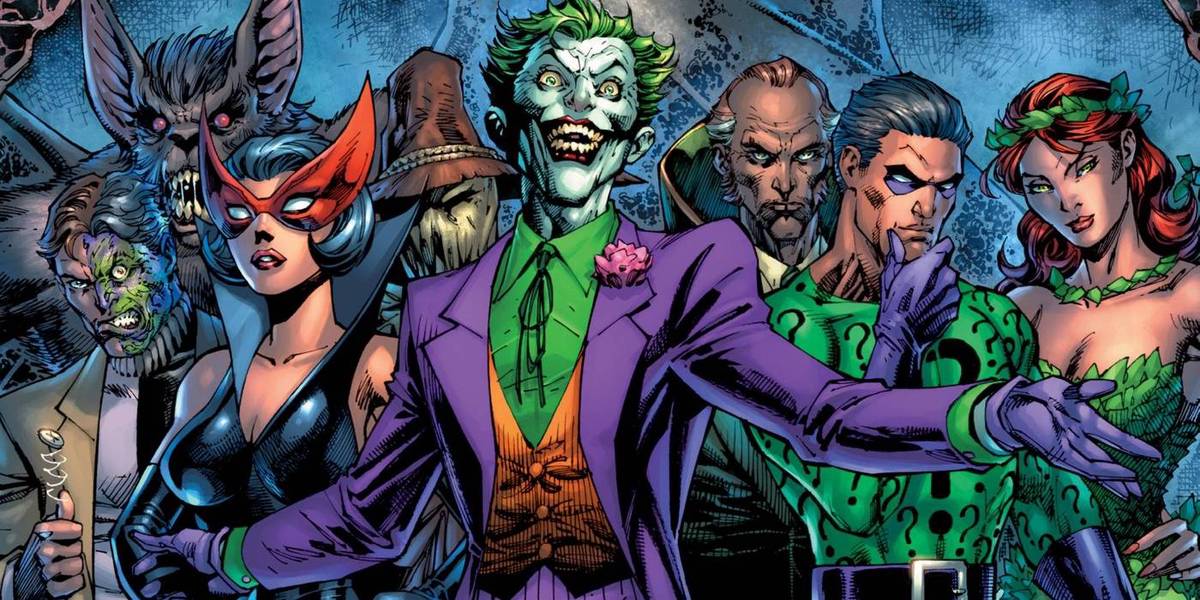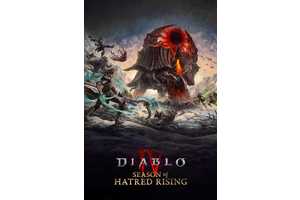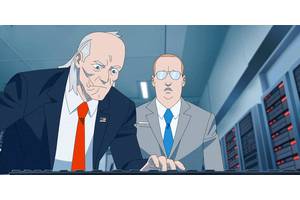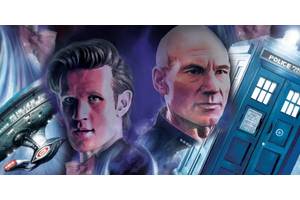Though Once a Gift, Batman's No-Kill Rule Has Become a Big Problem For One Disturbing Reason
Batman's no-kill code is a long-standing rule for his vigilantism, which initially made the Caped Crusader a beacon of justice within a gritty, corrupt Gotham, but over the years, Batman’s once golden rule has turned into the hero’s most glaring issue, as his villains got worse. Despite Batman’s principles remaining consistent, his villains have evolved, making Batman’s no-kill rule a point of serious debate.
Though not initially a part of Batman’s introduction in 1939’s Detective Comics #27 – written by Bill Finger, with art by Bob Kane – Bruce Wayne’s no-kill rule quickly developed into one of Batman’s most defining characteristics. Yet, as DC Comics evolved into darker storytelling and Batman villains became much more sinister by commonly committing acts of mass murder and terrorism, Batman's no-kill rule started to make less sense.
This issue becomes disturbing when considering Batman’s no-kill rule is, directly and indirectly, responsible for some of the vigilante's biggest losses.
The Dark Evolution Of Batman’s Rogues Gallery Has Made His No-Kill Rule More Of A Problem Over The Years
Batman Villains Went From Petty Criminals To Violent Supervillains
Admittedly, Batman abstaining from killing criminals made more sense when Batman’s primary stories involved Bruce Wayne solving cases as a detective, or stopping the Joker from robbing banks, hence his start in Detective Comics. Batman’s initial campy aesthetic was also partially due to the 1950s Comics Code Authority and the more lighthearted nature of the 1960’s Batman television series. However, DC began shifting Batman stories to take on a more grim tone, with stories like The Dark Knight Returns and Batman: Year One taking this gritty new era to the next level.
Most comic book readers will readily acknowledge that this is an observable shift that is recognizable in most major comic book heroes' trajectories, rather than just an issue specific to DC's Batman franchise. That is to say, as heroes become well-defined, they routinely become more powerful – and subsequently there is a corresponding shift, naturally, in the power levels of their enemies. That said, while this might be a ubiquitous trend in the superhero genre, Batman is nevertheless perhaps the most potent example, in part because of his pioneering no-kill rule, and partly because of his iconic rogues' gallery.
Despite Gotham being expanded on as an even more unhinged city, Batman’s no-kill code stayed unchanged as villains like Two Face and the Joker operated on a larger scale and committed mass casualties. Batman’s refusal to kill criminals sparked debates about whether his most brutal villains deserved mercy, but it also provided a moral boundary to the Caped Crusader as he refused to go as low as those he sought to stop. As villains began committing more serious crimes, Batman’s no-kill rule was more frequently called into question, especially during 1998’s "A Death in the Family.”
Batman’s Biggest “Failures” As A Hero Have Indirectly Caused By His No-Kill Rule
Red Hood & Batgirl, Casualties In Batman’s War
Batman’s dubious moral code became a huge point of contention after Batman #426 - 429, "A Death in the Family" by Jim Starlin and Jim Aparo, where the Joker infamously beat Jason Todd to death. Even after this tragedy occurred, Batman abstained from killing Joker, and consequentially, Joker would later go on to paralyze Barbara Gordon and torture Jim Gordon in the events of Batman: The Killing Joke. Even after all the Joker had done to his closest allies and his adopted son, Batman held tight to his code, turning his moral rule into something more destructive.
Jason’s death brought to light that Batman’s moral code allowed villains like the Joker to take countless lives with little to no consequences.
Batman’s decisions would famously come back to haunt him when a revived Jason Todd realized the Joker was still alive, after the villain had killed him and paralyzed Batgirl, leading Jason to break down and have a falling out with his former mentor. Jason’s death brought to light that Batman’s moral code allowed villains like the Joker to take countless lives with little to no consequences. These situations have continued to happen throughout Batman comics and, whether intentional or not, Batman puts the safety of others, even his closest friends, in danger at the behest of his no-kill rule.
The No-Kill Rule Was Meant To Separate Batman From The Bad Guys, But It Has Had Unforeseen Effects On The Caped Crusader
Bruce Wayne’s Morals Changed With His Villains
What was once considered a moral high ground is now a curse to Bruce because, after years of fighting, Batman knows criminals like Joker will always escape imprisonment and kill again, sometimes directly going after Batman’s own family. Occurrences such as Jason Todd’s death have continued to plague the Bat-Family, with Bane killing Alfred in "The City of Bane" storyline. As a result, Bruce Wayne’s no-kill rule introduced an unforeseen but interesting theory that Batman is just as unstable and obsessive as his villains.
Batman’s perpetual struggle with his code and the unchanging brutality of his villains have created an unforeseen insanity to Bruce’s methods.
Batman upholds his rule to prevent himself from taking a murderous path, an issue that Jason Todd as Red Hood faced, but it could be argued that Batman allowing criminals to live to harm again still continues the cycle of violence. Moreover, Batman continuing to adhere to his strict principles and the consequences that come of it have canonically put a strain on himself and the ones closest to him. Batman’s perpetual struggle with his code and the unchanging brutality of his villains have created an unforeseen insanity to Bruce’s methods that also offer depths to his character.
By Retaining The No-Kill Rule With Worse Villains, DC Turned Batman Into Its Most Morally Complex Anti-Hero
Batman's Skewed Moral Compass, Explained
Batman’s refusal to kill his enemies has been spotlighted as his resilience to uphold a sense of justice and, while this is somewhat true, it also emphasizes Bruce Wayne’s selective morality. Batman refuses to kill but will maim his enemies, he allows homicidal villains to escape and kill again, and he works alongside officers who do kill, bringing to light that his methods have imperfect parameters. Within a certain lens, Batman can be viewed as an enabler of the vicious cycle of violence and someone who disregards Gotham’s prison system that continuously can’t keep brutal villains locked away.
While some stories have played into this moral complexity, engaging with the idea of the extent to which Batman perpetuates the very problems he is trying to combat, others willfully ignore this dimension to the Caped Crusader's lore. In either case, the goal is to tell the best possible Batman story, but one thing these two camps of Batman storytellers almost unanimously agree on is that the character's no kill rule is too foundational to the character, at this point, to do away with.
Even though Bruce Wayne’s endeavors as Batman and his loyalty to his no-kill rule have put him and the Bat-Family in an endless cycle that begets violence, Batman without his moral code would not be as unique or compelling. As a result, the frequent moral dilemmas conceived from Batman’s no-kill rule have also led to some of the most memorable storylines of the Batman mythos. As Batman’s villains matured into deadlier threats, Batman’s notorious no-kill rule evolved with them, inadvertently turning Batman into a hero who tackles ethical complexities, making him one of DC Comics’ most morally profound superheroes.

- Created By
- Bob Kane, Bill Finger
- First Appearance
- Detective Comics
- Alias
- Bruce Wayne
- Alliance
- Justice League, Outsiders, Batman Family
- Race
- Human
- Franchise
- D.C.











